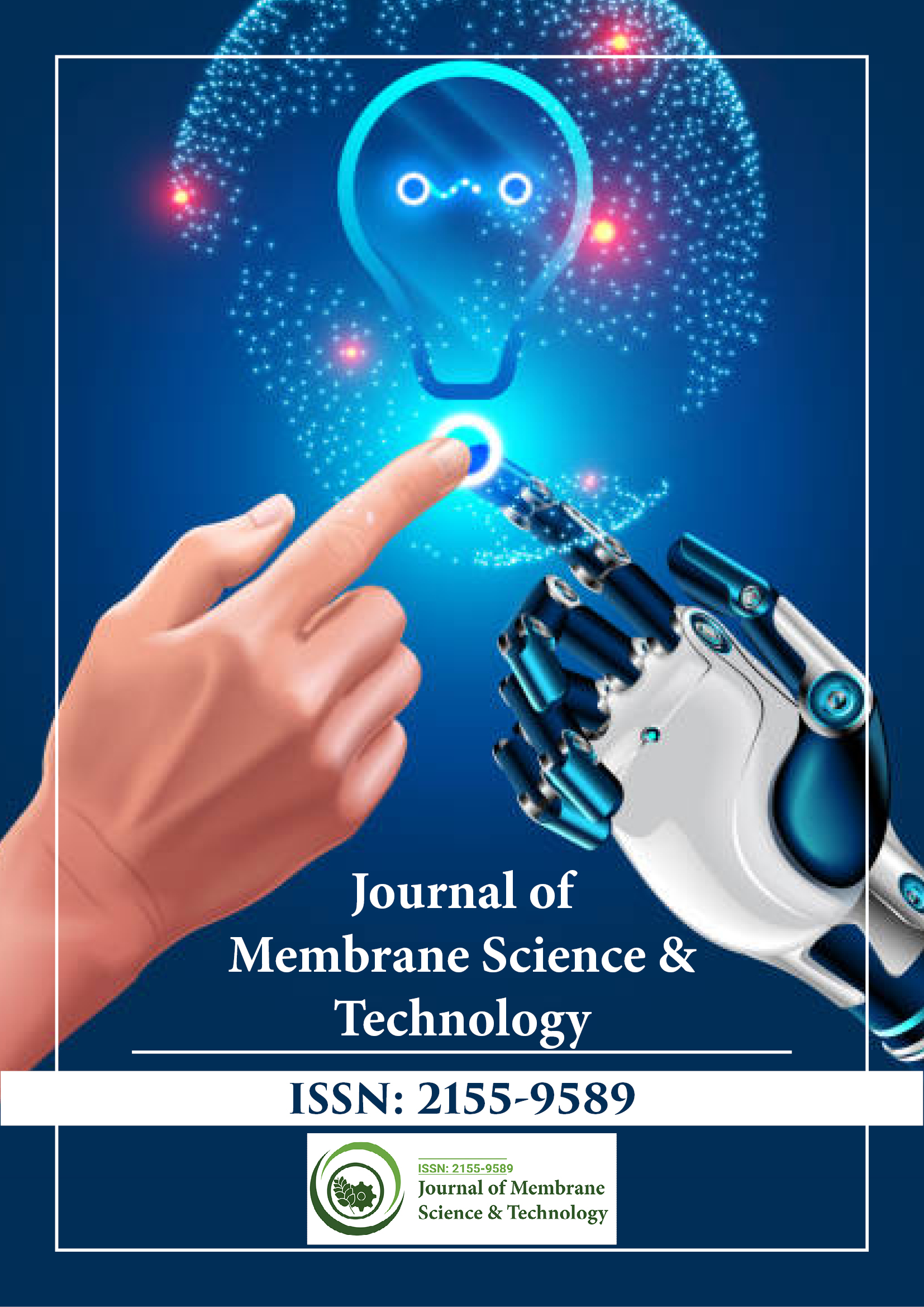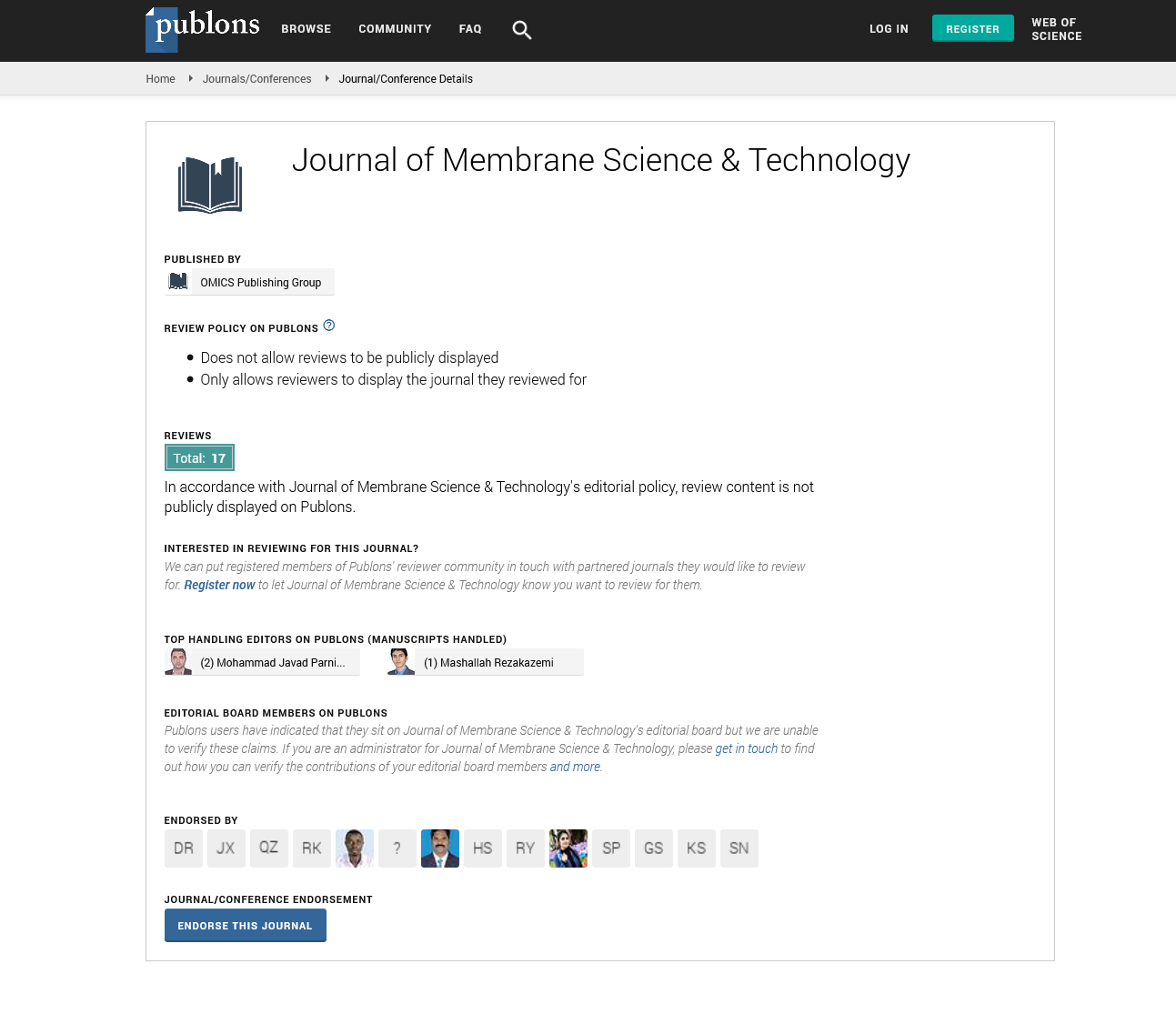Indexed In
- Open J Gate
- Genamics JournalSeek
- Ulrich's Periodicals Directory
- RefSeek
- Directory of Research Journal Indexing (DRJI)
- Hamdard University
- EBSCO A-Z
- OCLC- WorldCat
- Proquest Summons
- Scholarsteer
- Publons
- Geneva Foundation for Medical Education and Research
- Euro Pub
- Google Scholar
Useful Links
Share This Page
Journal Flyer

Open Access Journals
- Agri and Aquaculture
- Biochemistry
- Bioinformatics & Systems Biology
- Business & Management
- Chemistry
- Clinical Sciences
- Engineering
- Food & Nutrition
- General Science
- Genetics & Molecular Biology
- Immunology & Microbiology
- Medical Sciences
- Neuroscience & Psychology
- Nursing & Health Care
- Pharmaceutical Sciences
Commentary - (2025) Volume 15, Issue 1
Membrane Emulsification: A Precision Technique for Controlled Droplet Formation
Anika Tescher*Received: 31-Jan-2025, Manuscript No. JMST-25-29273; Editor assigned: 03-Feb-2025, Pre QC No. JMST-25-29273 (PQ); Reviewed: 17-Feb-2025, QC No. JMST-25-29273; Revised: 24-Feb-2025, Manuscript No. JMST-25-29273 (R); Published: 03-Mar-2025, DOI: 10.35248/2155-9589.25.15.411
Description
Membrane emulsification is an emerging and highly efficient technique for producing finely controlled emulsions, gaining significant attention across various industries including pharmaceuticals, food, cosmetics and specialty chemicals. Unlike conventional emulsification methods that depend heavily on high shear forces and mechanical agitation, membrane emulsification operates under much milder conditions. This technology achieves droplet formation by forcing the dispersed phase such as oil or water through a microporous membrane into a continuous phase flowing tangentially across the membrane surface. The gentle nature of this process makes it especially suitable for formulations containing sensitive or bioactive compounds that might degrade under heat or mechanical stress.
The working principle behind membrane emulsification revolves around interfacial dynamics at the membrane surface. Droplets form when the dispersed phase is extruded through the pores of the membrane and interacts with the flowing continuous phase. Depending on the operational mode, this can be achieved via crossflow membrane emulsification, where droplets are directly formed on the membrane surface or premix membrane emulsification, where a coarse emulsion is first prepared and then refined by passing through a membrane. The precise control over interfacial shear, membrane pore size and flow conditions allows for the production of monodisperse emulsions, where droplet sizes are consistent and predictable.
The typical system used for membrane emulsification includes a carefully selected microporous membrane, often made from materials like ceramics, stainless steel, or specialized polymers, depending on the chemical nature of the substances involved. These membranes are chosen for their compatibility and pore uniformity, with pore sizes generally ranging from submicron levels up to tens of microns. The system also incorporates pumps to control the flow and pressure of the dispersed phase, as well as devices to regulate the shear conditions at the membrane interface. Maintaining an optimal tangential flow of the continuous phase across the membrane surface is critical, as this flow assists in droplet detachment and prevents pore clogging.
One of the major advantages of membrane emulsification lies in its ability to produce emulsions with highly uniform droplet sizes. This uniformity leads to better product stability, improved texture and more predictable performance in end-use applications. Furthermore, the low energy requirements of this process, compared to traditional high-pressure homogenizers or rotor-stator mixers, make it both cost-effective and environmentally friendly. The reduced need for emulsifying agents, due to controlled interfacial area generation, adds another layer of efficiency and sustainability. The mild operating conditions ensure the integrity of sensitive ingredients such as proteins, enzymes, vitamins and pharmaceuticals, making it an ideal process for encapsulating active compounds.
In practical applications, membrane emulsification has shown great promise across diverse fields. In the pharmaceutical and biotechnology industries, it is used for producing drug delivery systems such as liposomes, microcapsules and nanoparticles that offer controlled release properties. Vaccines, protein formulations and other bio actives can also be encapsulated without loss of efficacy. In the food and beverage sector, the technology is employed for flavor encapsulation, functional food formulations, and the production of reduced-fat or nutrient-enriched emulsions. It allows for maintaining natural flavors and nutritional quality, especially in temperature-sensitive applications. In cosmetics, it plays a critical role in achieving fine textures and enhancing the delivery of active ingredients in creams, lotions and serums. In the chemical industry, it supports the creation of uniform polymer microspheres, controlled-release agrochemicals and fine coatings.
Despite its many advantages, membrane emulsification is not without challenges. A key limitation is membrane fouling, where accumulation of materials at the pore surface can impede flow and reduce process efficiency. Throughput is another concern, as the process generally operates at slower production rates compared to high-shear methods, which can restrict its scalability for large-volume manufacturing. Additionally, the compatibility of membrane materials with aggressive solvents or formulations must be considered, as certain compounds may degrade or clog the membrane. The process also demands careful tuning of operational parameters, such as pressure, flow rate, and shear conditions, to achieve desired droplet characteristics consistently.
To overcome these barriers and extend its industrial relevance, significant research and innovation are underway. Scientists and engineers are developing next-generation membranes with enhanced hydrophobic or hydrophilic properties, improved chemical resistance and anti-fouling surfaces. Modular system designs and parallel membrane setups are increasing throughput to make membrane emulsification feasible for large-scale production. Integration with other technologies such as microfluidics, ultrasound, and electrostatic emulsification is also being explored to enhance performance and broaden its application range. Moreover, advancements in automation and real-time monitoring using digital sensors and AI are helping optimize control over emulsion properties, enabling adaptive and intelligent processing.
Conclusion
In conclusion, membrane emulsification represents a paradigm shift in how emulsions are formulated, offering unmatched precision, efficiency and versatility. As consumer demand grows for high-quality, stable and functional emulsions across industries, this technique is poised to become a cornerstone of modern emulsification practices. With continuous progress in material science, process engineering and system integration, membrane emulsification will likely expand its reach, delivering innovative and sustainable solutions for the next generation of products.
Citation: Tescher A (2025). Membrane Emulsification: A Precision Technique for Controlled Droplet Formation. J Membr Sci Technol. 15:411.
Copyright: © 2025 Tescher A. This is an open-access article distributed under the terms of the Creative Commons Attribution License, which permits unrestricted use, distribution, and reproduction in any medium, provided the original author and source are credited.

